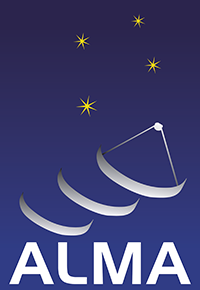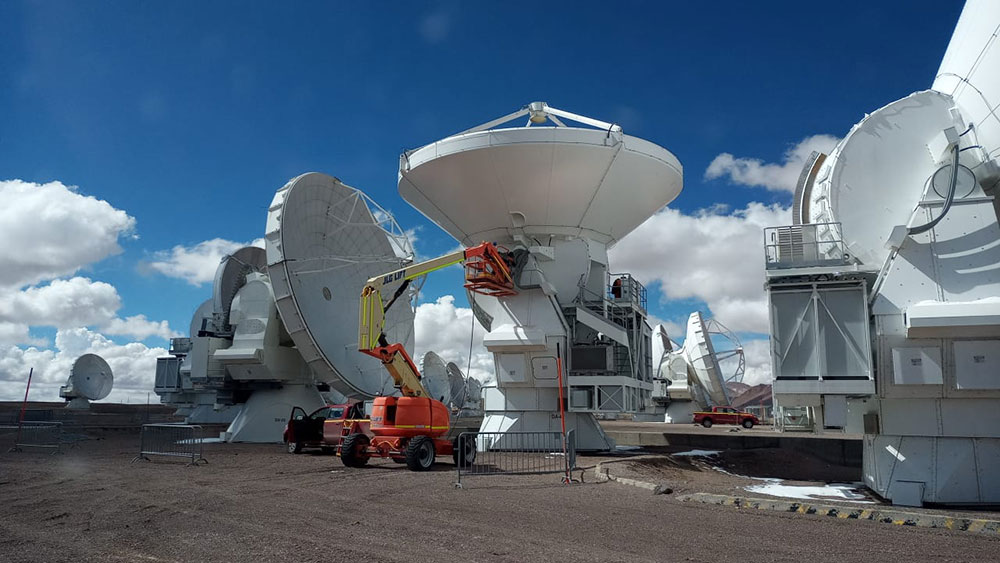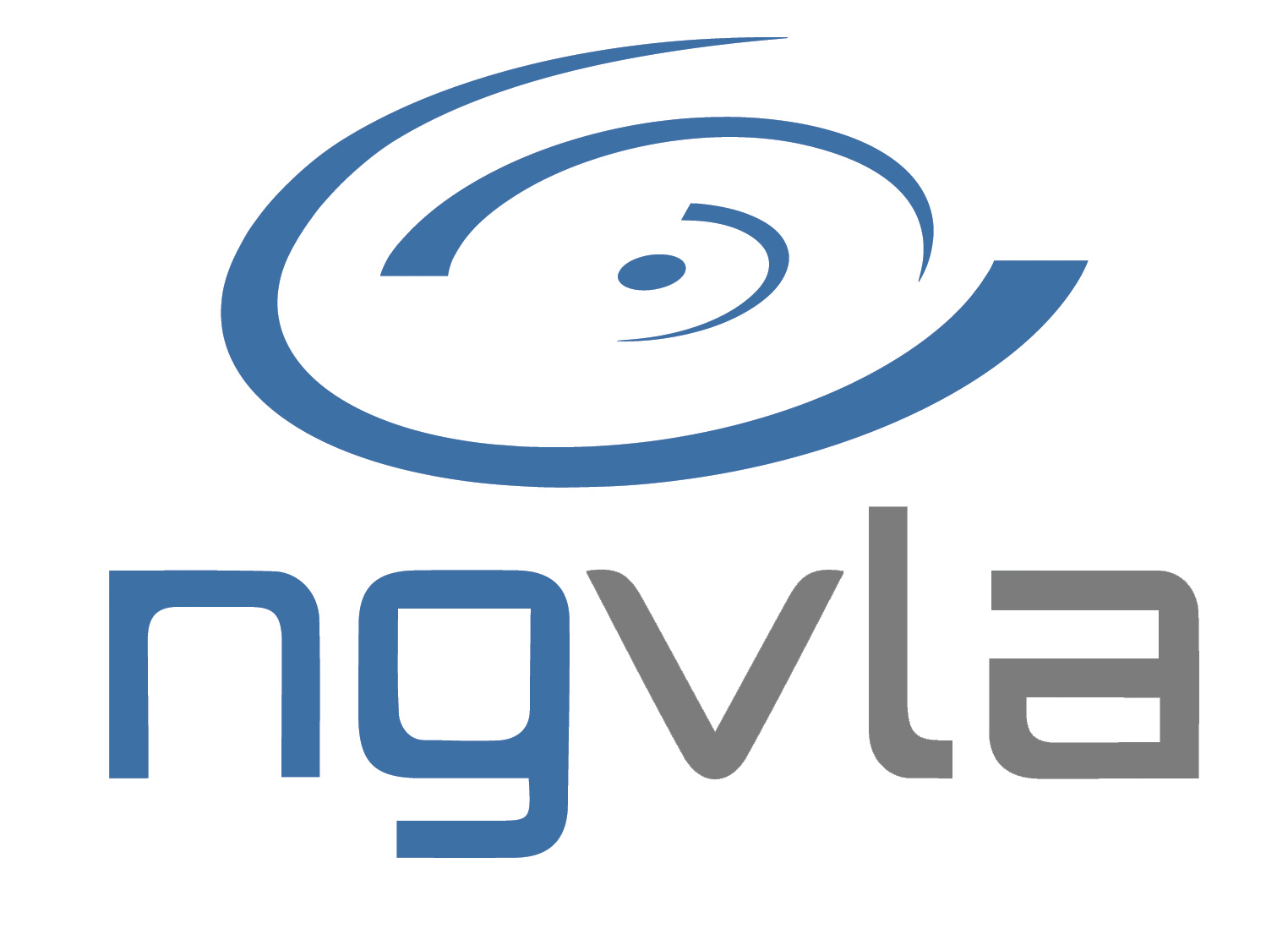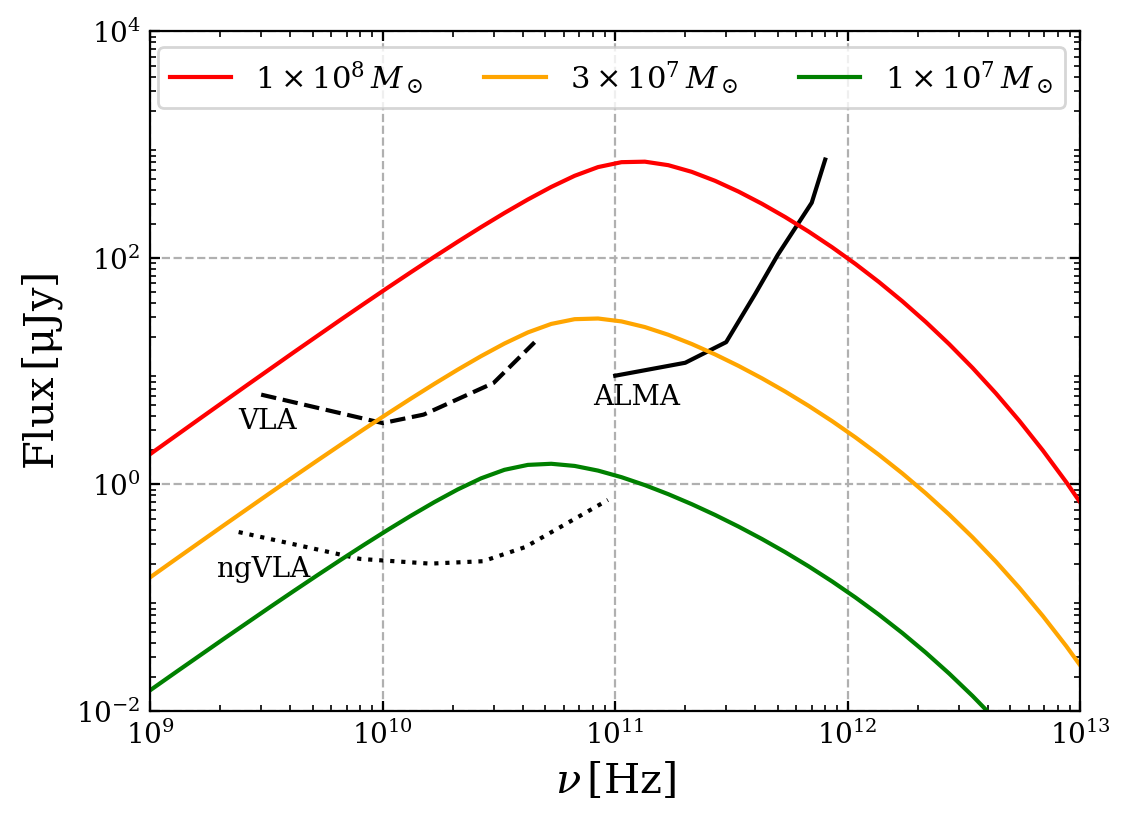NRAO eNews
Volume Vol#, Issue Iss#
Day# Month# Year#
NRAO eNews
Volume Vol#, Issue Iss# • Day# Month# Year#

Upcoming Events
NRAO at the Virtual AAS | All times are EST.


8th VLA Data Reduction Workshop
Mar 15 - Apr 1, 2021 | Virtual
NRAO Call for Proposals: Semester 2021B

The National Radio Astronomy Observatory (NRAO) invites scientists to participate in the Semester 2021B Call for Proposals for the Karl G. Jansky Very Large Array (VLA) and the Very Long Baseline Array (VLBA), High Sensitivity Array (HSA), and Global 3mm VLBI Array (GMVA).
The submission deadline for Semester 2021B proposals is Monday, 1 February 2021, at 17:00 EST (22:00 UTC).
We would like to highlight that NRAO is offering staff assistance with VLBA observation setup and data reduction for new and novice VLBA users. For more information see the VLBA, HSA and GMVA Proposal Guide.
Proposal preparation and submission are handled via the NRAO Proposal Submission Tool (PST) available at NRAO Interactive Services. Proposers who need assistance with proposal preparation or have questions regarding the Call for Proposals or NRAO telescope capabilities should contact Observatory staff via the NRAO Helpdesk. Note that using these tools (both the PST and the Helpdesk) requires registration.
ALMA Cycle 8 2021 Pre-Announcement

Following the postponement of Cycle 8 because of the COVID-19 pandemic, the Joint ALMA Observatory (JAO) will now start the next cycle of observations, referred to as "Cycle 8 2021", in October 2021. A Call for Proposals (CfP) with detailed information on Cycle 8 2021 is anticipated to be issued in March 2021 and the deadline for proposal submission will be in April 2021. The purpose of this pre-announcement is to highlight aspects of the CfP to assist with early planning, and it includes newly updated information over the previous pre-announcement delivered for Cycle 8 in December 2019. As the global response to the pandemic continues to evolve, we encourage interested parties to follow the ALMA Science Portal for the latest information.
ALMA Program News

Antenna checkout proceeds at the Array Operations Site at 5000m elevation.
[click to enlarge]
ALMA Science Sustainability
The schedule for the Cycle 9 Call for North American (NA) Development Project Proposals was delayed by six months due to the COVID-19 pandemic. The date of issue for the Call for Proposals will be 15 January 2021. Project execution can only begin after adjudication at the November 2021 ALMA Board Meeting.
The ALMA Development Projects Implementation Plan will be available for review and describes the fundamental processes for project proposal and review. This call for proposals will be open to the North American (NA) ALMA Operations Partnership, which is defined as the community of astronomers and scientists in related fields from NA ALMA partner countries. Projects will be funded for Cycle 9 in an integrated, multi-year award. Priority will be given to Projects which align with the ALMA Development Roadmap (ALMA Memo 612).
Topics of particular interest to the NA ALMA Partnership include larger bandwidths and improved receiver sensitivity, such as would be provided by an upgraded correlator and receivers. Second Generation Correlator proposals must meet the specifications of the Correlator Working Group report, the first draft of which is expected by the proposal call date.
All proposals and resulting instrumentation must comply fully with ALMA standards for system interfaces, interoperability, and documentation. NRAO staff can help applicants develop plans or steer them toward relevant documentation, upon request and with sufficient notice.
If you are planning or even considering proposing in response to this Call, you must file a Notice of Intent before 1 March 2021. In contrast to previous Calls, submission of a Notice of Intent is mandatory.
Additional details will be released with the Call in January 2021. The deadline for receiving the proposals will be 9 April 2021. The call will be linked from the main NA Development Program webpage.
Joint ALMA Observatory Return to Operations Status
Progress continues apace on ALMA's return to operations. A methodical power-up of key AOS Technical Building electronics, and antenna systems, has begun after a thorough checkout. These are major milestones towards the planned resumption of the Cycle 7 observing program in March 2021.
ngVLA Project News

ngVLA Town Hall Recording Available
Missed the live ngVLA Town Hall last month? If so, we invite you to view the recording of the presentations and the question-and-answer session. The event drew 154 participants from 17 countries. We recognize and appreciate the community's continued interest in the Project. Should new questions arise from online viewers, please direct them to Eric Murphy for answers.
ngVLA Community Studies Program CfP
We remind the community of the open call for proposals for the ngVLA Community Studies Program, a funding opportunity for further developing the most compelling ngVLA science questions. The proposal receipt deadline is 15 January 2021 at 23:59 EST.
New Views of Galaxy Formation and Evolution
The NRAO and the ngVLA Project will convene a virtual Special Session titled New Views of Galaxy Formation and Evolution on Thursday, 14 January 2021, 12:00-13:30 EST (oral session) and Friday, 15 January 2021, 16:10-17:20 EST (iPoster session), at the winter American Astronomical Society (AAS) meeting.
Sensitive ground- and space-based astronomical facilities are pushing the detection of galaxies well into the Epoch of Reionization, less than 1 Gyr after the Big Bang. Such detections are allowing us to begin piecing together a picture for how and when the first galaxies formed, along with the physical processes driving their evolution into the mature systems that we observe in the local Universe. This AAS Special Session will highlight recent scientific breakthroughs enabled by current investigations using large optical/IR, (sub-)millimeter, and radio facilities; describe planned near- and long-term improvements for ground- and space-based facilities; discuss major scientific leaps likely to result from next-generation facilities across the electromagnetic spectrum; and review the highest-priority goals that will be accomplished by the state-of-the-art observatories commissioned in the next decade.
This AAS event will feature 6 invited oral presentations and 20 contributed iPoster presentations. Speakers are Mark Dickinson (NOIRLab), Roberto Decarli (INAF - Osservatorio di Astrofisica e Scienza dello Spazio), Justin Spilker (University of Texas), Xiaohui Fan (University of Arizona), Chris Willott (Herzberg Astrophysics), and Rachel Sommerville (Flatiron Institute).
Wandering Massive Black Holes with the ngVLA

Spectra from wandering BHs of various masses that accrete hot and diffuse plasma in the outskirts of the massive elliptical galaxy M87. Sensitivity curves assume 1-hour on-source integrations. Adapted from Guo et al. (2020).
[click to enlarge]
Supermassive black holes are almost ubiquitously harbored in the nuclei of massive galaxies, which were assembled through galaxy mergers. As a natural outcome of frequent galaxy mergers, incoming massive black holes (BHs) would sink toward the centers, dynamically interact with each other, and coalesce with gravitational wave emission. In gas-poor massive ellipticals, multiple BH encounters are likely to eject less massive ones from the nuclei. Such ejected BHs are expected to orbit at the outskirts of galaxies as “wandering BHs” and plunge into diffuse and hot plasma (with an electron density of about 0.1 cm-3 and temperature of about 107 K).
Performing 3D hydrodynamical simulations, Guo et al. (2020) have investigated the accretion dynamics of gas onto a wandering BH. Owing to angular momentum of the inflow, the BH feeding rate is limited at about 10% of the canonical Bondi-Hoyle-Littleton accretion rate. As a result, the low-density accretion matter does not cool via emitting radiation but forms a hot and turbulent disk. Using a semi-analytical model for two-temperature radiatively inefficient disks, Guo et al. (2020) found that the radiation spectrum expected for wandering BHs peaks at about 100 GHz, where the ngVLA will be very sensitive.
The ngVLA will provide an unparalleled opportunity for hunting for “wandering BHs”. The continuum flux densities expected from wandering BHs in the outskirts of M87 could exceed 1 microJy at 100 GHz, assuming thermal-limited imaging (see figure). In the outskirts of the Milky Way, wandering BHs of lower masses could also be detectable. In addition, the long-baseline components of the ngVLA will remove contaminants that have spatially extended structures, such as the interstellar medium and high-z galaxies. The detection of wandering BHs can prove the evolution scenario of massive galaxies through galaxy mergers accompanied by multiple BH interactions.
Since 2015 the acronym ngVLA has appeared in over 600 publications indexed in the SAO/NASA Astrophysics Data System. This article continues a regular feature intended to highlight some of those publications. We are especially interested in showcasing work done by early-career researchers. Anyone wishing to volunteer to author a feature should contact Joan Wrobel.
Summer Student Programs
In 2020, NRAO and Green Bank Observatory ran a successful summer student program remotely, with the students and their mentors working from their homes. Many of our summer students will be presenting the results of their research at the virtual American Astronomical Society (AAS) meeting, 11 – 15 January. We invite you to visit these student presentations and learn about the exciting research being done by these outstanding students. A list of summer student presentations at this winter AAS is online.
For 2021, our goal is to run the summer program on our sites in Green Bank, West Virginia, Charlottesville, Virginia, and Socorro, New Mexico. However, if the pandemic persists and Observatory policies at the time do not allow on-site student research, we will run the 2021 program remotely, as in 2020.
Our summer program gives students an opportunity to conduct cutting-edge research in astronomy, engineering, and software development using our state-of-the-art radio telescope facilities. We particularly encourage students from underrepresented minority groups to apply.
The application deadline for student positions next summer is 1 February 2021.
Additional information on the 2021 program is available at the Summer Programs webpage.
NAC Summer Research Opportunities
The National Astronomy Consortium (NAC) is pleased to offer summer research opportunities this summer at NRAO and at our partner sites Princeton University, Space Telescope Science Institute (STScI), Michigan State University, and the University of Wisconsin-Madison. To learn more about the NAC program, please visit the NAC website.
The deadline to apply for these opportunities is February 1, 2021.
The following table lists the research that will be presented at the January 2021 American Astronomical Society meeting by NAC and NINE participants.
| Name | Institution | Session Type | Session # | Day | Time |
|---|---|---|---|---|---|
| Jacqueline Antwi-Danso | Texas A&M University | iPoster | 342 | 1/13/21 | 4:10-5:40 pm |
| John Beasley | NRAO | iPoster | 323 | 1/13/21 | 12:10-12:20 pm |
| iPoster | 547 | 1/15/21 | 4:10-5:40 pm | ||
| Tuesday Cabang | South Carolina State University | iPoster | 123 | 1/11/21 | 4:20-4:30 pm |
| Leonardo Clarke | University of Minnesota | iPoster | 126 | 1/11/21 | 4:20-4:30 pm |
| iPoster | 343 | 1/13/21 | 4:10-5:40 pm | ||
| Allison Erena | Macalester College | iPoster | 147 | 1/11/21 | 4:10-5:40 pm |
| Samantha Garza | University of Dallas | iPoster | 329 | 1/13/21 | 4:50-5:00 pm |
| Sarra Hayoune | Stevens Institute of Technology | iPoster | 539 | 1/15/21 | 4:10-5:40 pm |
| Jacqueline Hernandez | Texas Christian University | iPoster | 551 | 1/15/21 | 4:10-5:40 pm |
| iPoster | 527 | 1/15/21 | 5:20-5:30 pm | ||
| Carlos Ortiz-Quintana | University of Puerto Rico | iPoster | 129 | 1/11/21 | 4:20-4:30 pm |
| Aliyah Postell | The University of Arizona | Oral Session | 307 | 1/13/21 | 1:00-1:10 pm |
| Diana Powell | UC Santa Cruz | Oral Session | 312 | 1/13/21 | 12:20-12:40 pm |
| Mihika Rao | Agnes Scott College | Oral Session | 114 | 1/11/21 | 1:00-1:10 pm |
| iPoster | 533 | 1/15/21 | 4:10-4:20 pm | ||
| Azia Robinson | Agnes Scott College | Oral Session | 114 | 1/11/21 | 1:00-1:10 pm |
| iPoster | 131 | 1/11/21 | 4:10-4:20 pm | ||
| Mauricio Rodriguez Alas | Universidad Latina Costa Rica | iPoster | 323 | 1/13/21 | 12:10-12:20 pm |
| Viviana Rosero | NRAO | iPoster | 131 | 1/11/21 | 4:10-4:20 pm |
| iPoster | 348 | 1/13/21 | 4:10-5:40 pm | ||
| Oral Session | 406 | 1/14/21 | 12:00-12:10 pm | ||
| iPoster | 535 | 1/15/21 | 4:10-5:40 pm | ||
| iPoster | 535 | 1/15/21 | 4:10-5:40 pm | ||
| iPoster | 547 | 1/15/21 | 4:10-5:40 pm | ||
| Danielle Rowland | American Museum of Natural History | Oral Session | 415 | 1/14/21 | 12:00-12:10 pm |
| Abderahim Salhi | Stevens Institute of Technology | iPoster | 541 | 1/15/21 | 4:10-5:40 pm |
| Jarf-Tayar Shabazz | Florida International University | iPoster | 141 | 1/11/21 | 4:10-5:40 pm |
| Jasmin Washington | University of Arizona | Oral Session | 115 | 1/11/21 | 12:00-1:30 pm |
| iPoster | 337 | 1/13/21 | 4:10-5:40 pm | ||
| Autumn Winch | Bryn Mawr College | iPoster | 129 | 1/11/21 | 4:30-4:40 pm |
| Alia Wofford | Howard University | iPoster | 535 | 1/15/21 | 4:10-5:40 pm |
| Fatima Zaidouni | University of Cambridge | Oral Session | 429 | 1/14/21 | 4:10-4:20 pm |

